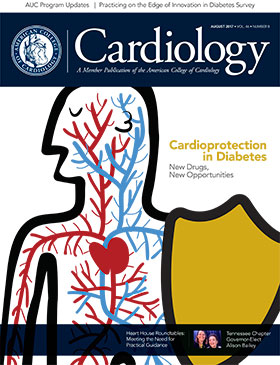Proposed Implementation Timeline
In July, CMS released the proposed 2018 Medicare Physician Fee Schedule (PFS), which included a proposal to delay the implementation of this consultation requirement, originally slated for Jan. 1, 2018, by one year to begin Jan. 1, 2019. Additionally, CMS proposed instituting a voluntary reporting period for providers to test their workflow and claims processing starting as early as July 2018. The College is committed to ensuring the voices and concerns of cardiologists are heard in the implementation of the AUC Program.
Approved AUC
Only AUC developed by approved “provider-led entities” (PLE) can be used. As a qualified PLE, the ACC is approved to develop and modify AUC for advanced diagnostic imaging through June 2021. The College is currently working to update existing and create new AUCs for this program. In addition to ACC, CMS approved 16 other qualified PLEs to develop imaging criteria as of June 2017.
Approved Vendors
Coinciding with the release of the proposed PFS, CMS released an updated list of qualified CDSM vendors. To ensure the ACC’s AUC is available to members, the College is working to license its AUC content to qualified CDSMs. A list of CDSMs with licensed ACC content is available at www.ACC.org/FOCUS. It is important to note that the ACC’s imaging clinical decision support tool, FOCUS, is not an approved CDSM.
Claims Processing
CMS proposes that AUC consultation will be documented in the form of new codes and modifiers on the Medicare claim form. In the coming months, CMS will publish and finalize additional regulations with specific instructions on how ordering and imaging professionals are to participate in the AUC Program. Since the current proposal is open for public comment and subject to change, the ACC will continue to provide formal details as they become available.
Next Steps For Members
The AUC Mandate has the potential to significantly change practice workflow. The ACC strongly encourages all members to begin planning discussions with their practice, cardiovascular business line and health systems. It will be important to understand which AUC content and decision support vendors your office will use. The ACC continues to diligently develop comprehensive AUC policies in all areas of cardiovascular imaging. Additionally, the College has formed a multi-disciplinary AUC mandate work group to acknowledge and address member questions and concerns related to the AUC program as these details emerge. This group is currently in the process of developing communications and tools to help members prepare for implementation.
<<< Return to top


 Participants working at the ACC's AUC Summit at Heart House on August 9.
Participants working at the ACC's AUC Summit at Heart House on August 9.

